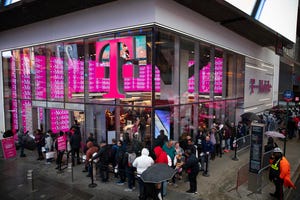Cisco, ADVA Push Ethernet Access
Ethernet demarcation becomes an even hotter topic as Cisco moves into the game

Cisco Systems Inc. (Nasdaq: CSCO) and ADVA Optical Networking are trying to beef up their Ethernet access options, catering to the service providers that want better control over Ethernet.
Cisco is rolling out its first Ethernet demarcation box, while ADVA -- which got into the demarcation game with the acquisition of Covaro -- is beefing up its offerings with monitoring software. Both companies made announcements Monday to coincide with the Carrier Ethernet World Congress in Madrid. (See ADVA, InfoVista Team.)
With some pieces of Ethernet management becoming set, carriers are turning their attention to the edge, where they'd like to increase their options for monitoring and controlling Ethernet connections. "One of the things customers have said about Ethernet, even though there's a lot of buzz, is that it's really not manageable," says Mike Capuano, Cisco senior marketing manager.
Cisco's ME 3400-2CS, announced Monday, is a two-port version of the 3400 and presents Cisco's first step into Ethernet demarcation, an area the company hadn't bothered touching before. The box was launched today amid a flurry of other Cisco Ethernet announcements, including the 12-port ME 3400-12CS and the ME 4924-10G, an aggregation box with 10-Gbit/s uplinks.
A demarcation box includes Ethernet operations, administration, and maintenance (OAM) to help carriers isolate faults in the network, determining if the problem is on the carrier or customer side of a connection.
The demarcation box is intended to sit at the customer premises, or very close, and therefore shouldn't be that big -- a reason why arbitrary Ethernet gear isn't ideal for the job. "The 3400 has a lot of ports, but you might not need all of them. It's not an optimized box for demarcation," says Fred Ellefson, ADVA's vice president of Etherjack alliances. ("Etherjack" being the original name of Covaro's product.)
Other equipment vendors selling to the Ethernet demarcation market include Metrobility, recently acquired by Telco Systems (BATM) ; MRV Communications Inc. (Nasdaq: MRVC); and RAD Data Communications Ltd.
Management gets covered by three standards: 802.1ag and 802.3ah from the Institute of Electrical and Electronics Engineers Inc. (IEEE) bag, and E-LMI, a new standard from the MEF covering the span between the customer site and the demarcation box. Cisco is announcing LMI support today and claims to be the first vendor to do so.
Because carriers want a common look and feel to Ethernet OAM throughout the network, it's going to be important for Cisco to have a demarcation box. "They're going to be using these demarcation platforms to support some large rollouts, I'd guess," says Heavy Readinganalyst Stan Hubbard. "The goal for the industry overall is not to have the link OAM and the connectivity OAM but to have OAM end-to-end."
Predictably, then, Cisco is now talking about providing full end-to-end Ethernet, using its demarcation boxes at the far edge and its 4500 switch to aggregate Ethernet rings.
Meanwhile, ADVA -- which got into the Ethernet demarcation game with last year's Covaro acquisition -- is also stepping up its Ethernet management game.
ADVA announced a partnership with InfoVista SA , which sells performance monitoring systems for the network core. The companies are now developing similar monitoring for Ethernet access. The idea was brought up by Australian Ethernet carrier Uecomm Ltd. , a customer of both vendors.
Carriers are interested in monitoring Ethernet performance, particularly in cases where a connection traverses some other provider's network, opening the possibility for someone else's problems to ruin a customer's link. "No one carrier has a national footprint, much less an international footprint," Ellefson says. "The wholesale market is a driver for the whole area of SLAs."
The ability to monitor Ethernet isn't all that new, but it's not ubiquitous either. "Cisco has some tools in their switches and routers that can measure SLAs. The challenge is that there isn't a Cisco router for every service," Ellefson says.
— Craig Matsumoto, Senior Editor, Light Reading
About the Author(s)
You May Also Like











